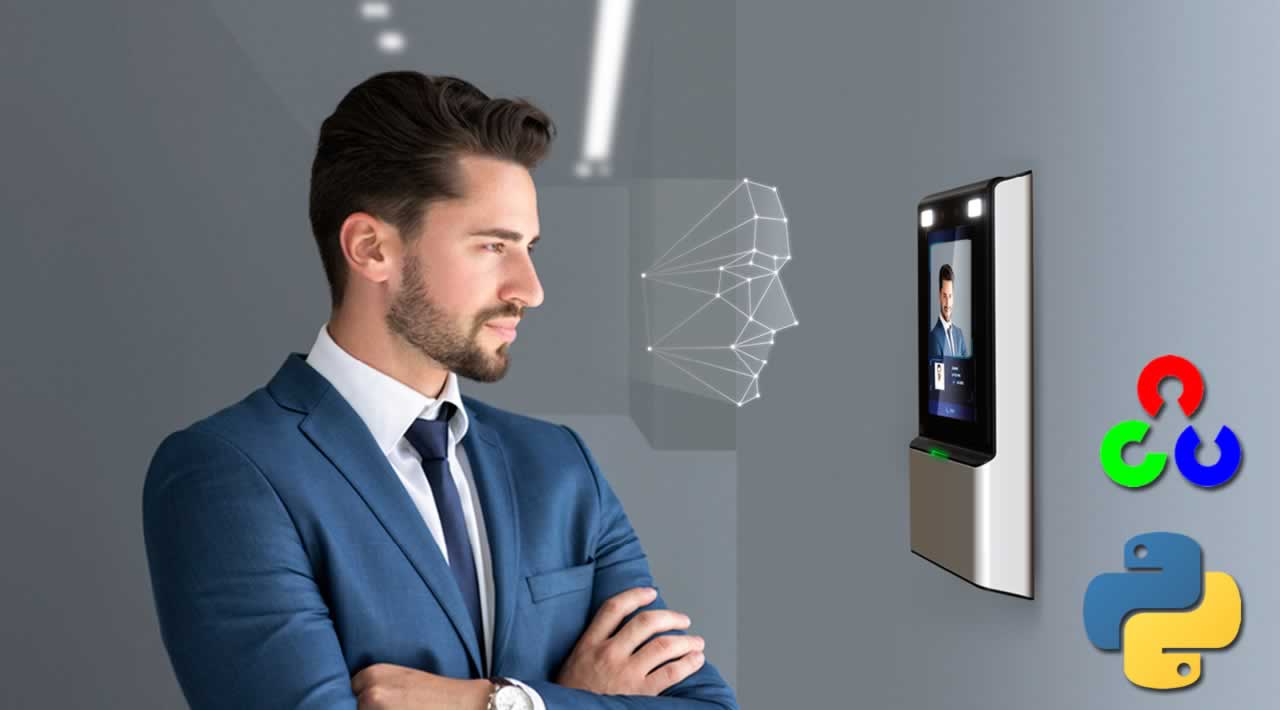How to Perform Face Detection in Python using a Webcam
This tutorial is a follow-up to Face Recognition using Python and OpenCV, so make sure you’ve gone through that first post.
As mentioned in the first post, it’s quite easy to move from detecting faces in images to detecting them in video via a webcam - which is exactly what we will detail in this post.
Table of Contents
Before you ask any questions in the comments section:
- Do not skip over the blog post and try to run the code. You must understand what the code does not only to run it properly but to troubleshoot it as well.
- Make sure to use OpenCV v2.
- You need a working webcam for this script to work properly.
- Review the other comments/questions as your questions have probably already been addressed.
Thank you.
Pre-requisites
- OpenCV installed (see the previous blog post for details)
- A working webcam
The Code
Let’s dive straight into the code, taken from this repository.
import cv2
import sys
cascPath = sys.argv[1]
faceCascade = cv2.CascadeClassifier(cascPath)
video_capture = cv2.VideoCapture(0)
while True:
# Capture frame-by-frame
ret, frame = video_capture.read()
gray = cv2.cvtColor(frame, cv2.COLOR_BGR2GRAY)
faces = faceCascade.detectMultiScale(
gray,
scaleFactor=1.1,
minNeighbors=5,
minSize=(30, 30),
flags=cv2.cv.CV_HAAR_SCALE_IMAGE
)
# Draw a rectangle around the faces
for (x, y, w, h) in faces:
cv2.rectangle(frame, (x, y), (x+w, y+h), (0, 255, 0), 2)
# Display the resulting frame
cv2.imshow('Video', frame)
if cv2.waitKey(1) & 0xFF == ord('q'):
break
# When everything is done, release the capture
video_capture.release()
cv2.destroyAllWindows()
Now let’s break it down…
import cv2
import sys
cascPath = sys.argv[1]
faceCascade = cv2.CascadeClassifier(cascPath)
This should be familiar to you. We are creating a face cascade, as we did in the image example.
video_capture = cv2.VideoCapture(0)
This line sets the video source to the default webcam, which OpenCV can easily capture.
NOTE: You can also provide a filename here, and Python will read in the video file. However, you need to have ffmpeg installed for that since OpenCV itself cannot decode compressed video. Ffmpeg acts as the front end for OpenCV, and, ideally, it should be compiled directly into OpenCV. This is not easy to do, especially on Windows.
while True:
# Capture frame-by-frame
ret, frame = video_capture.read()
Here, we capture the video. The read() function reads one frame from the video source, which in this example is the webcam. This returns:
- The actual video frame read (one frame on each loop)
- A return code
The return code tells us if we have run out of frames, which will happen if we are reading from a file. This doesn’t matter when reading from the webcam, since we can record forever, so we will ignore it.
# Capture frame-by-frame
ret, frame = video_capture.read()
gray = cv2.cvtColor(frame, cv2.COLOR_BGR2GRAY)
faces = faceCascade.detectMultiScale(
gray,
scaleFactor=1.1,
minNeighbors=5,
minSize=(30, 30),
flags=cv2.cv.CV_HAAR_SCALE_IMAGE
)
# Draw a rectangle around the faces
for (x, y, w, h) in faces:
cv2.rectangle(frame, (x, y), (x+w, y+h), (0, 255, 0), 2)
# Display the resulting frame
cv2.imshow('Video', frame)
Again, this code should be familiar. We are merely searching for the face in our captured frame.
if cv2.waitKey(1) & 0xFF == ord('q'):
break
We wait for the ‘q’ key to be pressed. If it is, we exit the script.
# When everything is done, release the capture
video_capture.release()
cv2.destroyAllWindows()
Here, we are just cleaning up.
Test!
So, that’s me with my driver’s license in my hand. And you can see that the algorithm tracks both the real me and the photo me. Note that when I move slowly, the algorithm can keep up. When I move my hand up to my face a bit faster, though, it gets confused and mistakes my wrist for a face.
Like I said in the last post, machine learning based algorithms are rarely 100% accurate. We aren’t at the stage where Robocop driving his motorcycle at 100 mph can track criminals using low quality CCTV cameras… yet.
The code searches for the face frame by frame, so it will take a fair amount of processing power. For example, on my five year old laptop, it took almost 90% of the CPU.
#python #opencv #machine-learning #image #data-science
